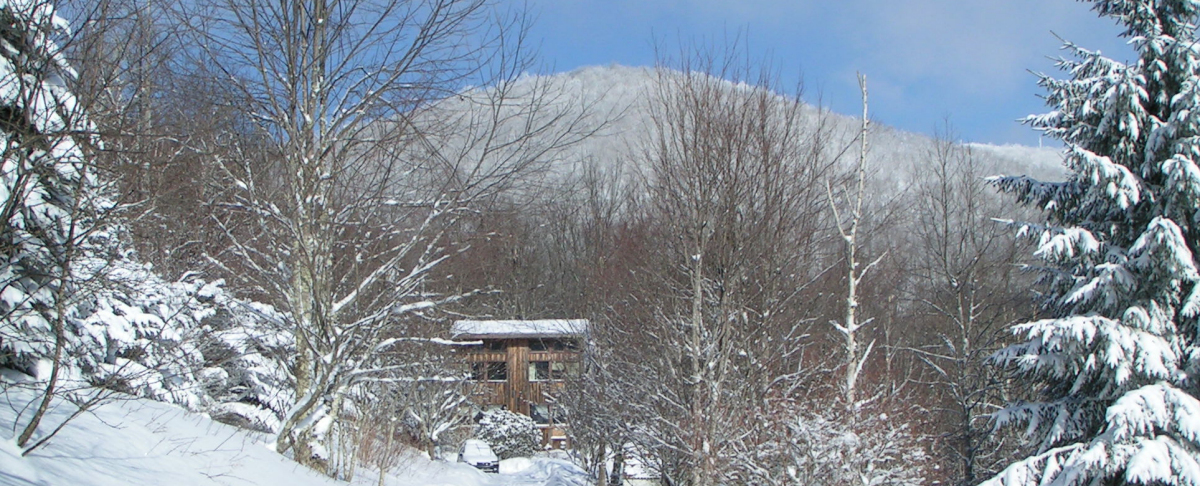I’ve described the evolution of our gardening activities in an earlier blog entitled The Garden. In its current incarnation our vegetable and fruit garden encompasses a ninety- by sixty-foot area enclosed by a seven-foot-high deer fence installed to prevent our deer, raccoon, possum, rabbit, and other animal neighbors from helping themselves to our produce. We still have provided some food to the animals, but have placed it outside the fence. Most of the planted space is now within wooden raised garden beds of various sizes. We’ve raised a wide variety of vegetables and berries over the years—over twelve hundred pounds worth in the one year we actually measured the crops produced.
The contents of the garden have changed from year to year. We decided within the past couple of years to be more selective in our plantings, limiting them to the crops we especially want to grow for ourselves and eliminating the plants that require more space or energy than we choose to devote for the returns received. We will rely on the local farmers’ markets and the generosity of neighbors for the items we do not produce ourselves. We also have begun planting more berries (strawberries, blueberries, blackberries, raspberries, honey berries, and high bush cranberries) and fruits (grapes, plums, pears, apples, apricots, Asian persimmons, figs, and hardy kiwis so far) which hopefully will produce their fruits without the same effort required by annual crops. And we do have thriving beds of asparagus and rhubarb that keep us well supplied with minimal continuing effort on our part.
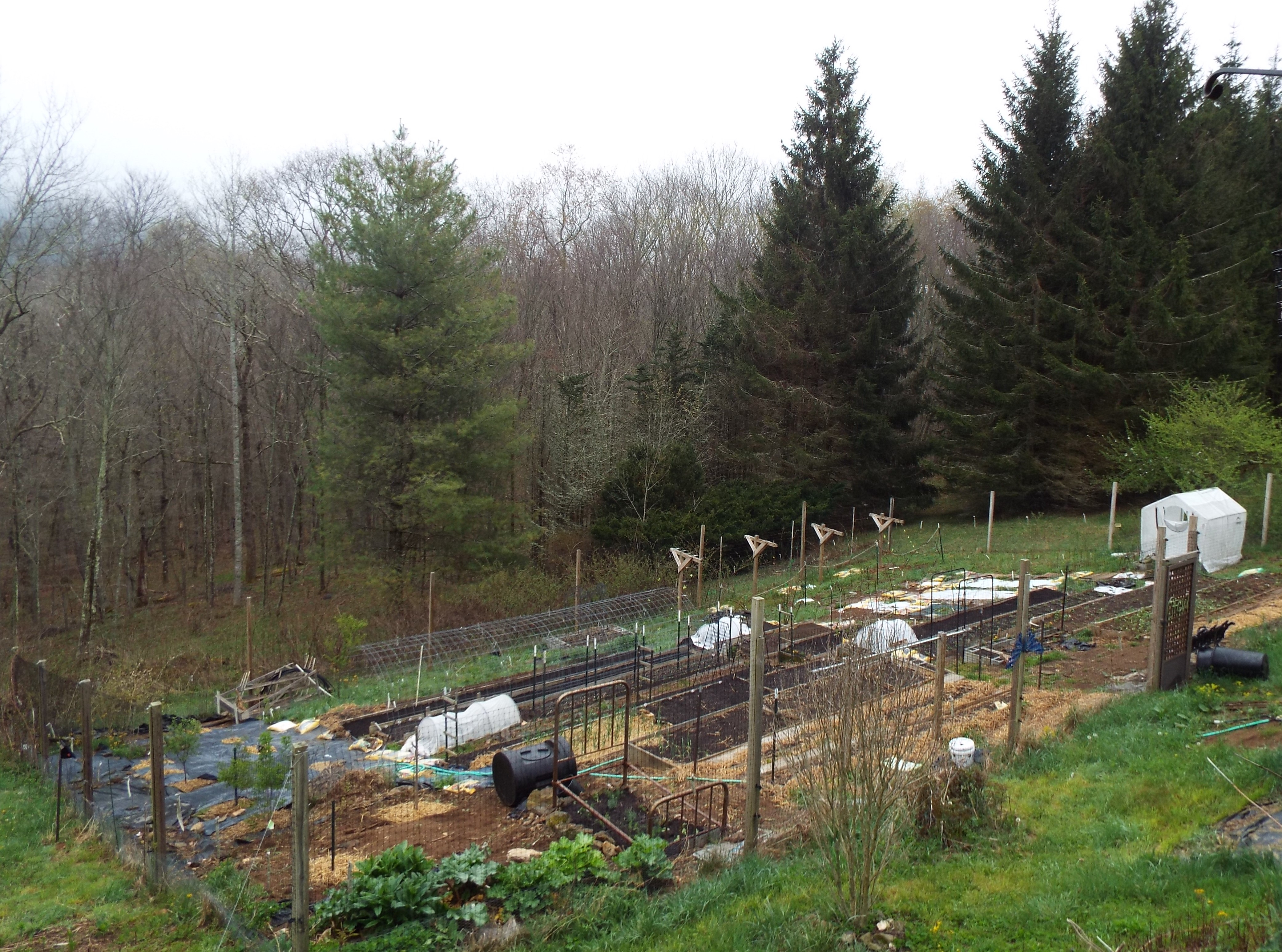
The garden space last year, ready for planting
This year, however, we decided that our garden would be different, very different. We wanted to spend major amounts of our time on some other important activities we’ve had on hold for too long: more writing, planning and preparing for an addition to our house, various landscaping and building projects, some additional travels we’ve talked about, art and photography projects, and spur-of-the-moment fun time spent together. So we decided not to plant a garden this year. After clearing out the garden remnants from the growing season last year, we intended to put the garden to bed and let it rest for a year.
However, nature had other ideas. Nature never rests. Over the course of the winter when nothing appears to be happening in the garden, much is in preparation for the coming spring. Spring comes to us late here on the mountain. Our last average frost date is about May 25 and we’ve seen three inches of snow here on Memorial Day weekend. But, even though spring may be delayed, it comes finally with great enthusiasm. Seeds and roots that have been waiting patiently for warmer weather burst forth when those warm sunny days arrive. Patches of ground that had seemed empty a few days ago now are covered with the green of new growth.
The edge of the garden is no more than thirty feet from our deck, so we can see it easily from the house. We’ve been harvesting asparagus for weeks now, so we have been into the garden at least every other day. But when I made a more thorough survey of the entire garden a few days ago, I was overwhelmed. Most of the beds, which we had really intended to cover with black plastic last fall, were now covered instead with masses of chickweed, wild sorrel, dandelions, burdock, curly dock, various grasses, wild asters, daisies, and dozens of other kinds of plants. It has always been difficult to control the vegetation in the pathways and border areas because of the sloping, confined area, not to mention the problems I have keeping mowers and weed eaters functioning. The pathways now were were knee-deep in plants of every sort and much of the border area had grass that was shoulder-high. It was a depressing sight and one that called out for some immediate attention.
Several days of torrential rain in our area had finally come to an end, so Carole and I started on the task of reclaiming the garden from the profusion of growth that spring had brought. She really needed to be busy with the finishing touches of the book she has been working on for the past two years, but recognizing my distress at seeing this unexpected garden project, she put her project aside for a time. I settled down to work at clearing the weeds from the asparagus beds, since the still emerging asparagus spears were about to be overrun. Carole tackled several of the beds that supposedly held nothing but weeds, though we did discover some cilantro, dill, potato, and tomato plants that had managed to find themselves a spot here and there—volunteers or self-seeders as they are called. We probably worked for five or six hours before a late-afternoon shower ended our efforts for the day. At least we were able to get a few of the beds cleared out.
The following day I resumed the garden activity while Carole returned to the more pressing matters of the book and some other tasks, including pressure washing part of our deck and siding in preparation for painting later in the summer. The planting beds on which I was working are either three or four feet wide and about twenty-four feet long. I would work the length of each bed on hands and knees or sometimes sitting down, reaching halfway across the bed, then returning along the other side of the bed to get the other half. For most of the beds the weeds had to be pulled individually, being sure to get the roots to avoid re-sprouting. Each of the larger weeds that was pulled revealed several dozen minute pairs of leaves marking another weed seed that had sprouted, waiting for its place in the sun to start growing. The soil then had to be stirred to dislodge and bury each of these tiny plants, hopefully not to re-emerge. Occasionally there were burdock or curly dock plants to be removed; their long tap roots extended a foot or more into the ground and had to be dug out—pulling was not an option.
Six or seven hours of work found all the beds on one side of the garden cleared of weeds, probably a fourth of the overall area that needed to be dealt with, and not necessarily the most difficult part of this project. Yet it was very satisfying to see the results of our two days of labor. It wasn’t just the end result that was rewarding. The process of working in the garden, like many repetitive tasks that might be considered tedious and meaningless, is filled with opportunities. The work requires that I get up close and personal with the plants; it can’t be done at a distance. The physical acts require focus, removing tiny plants that are unwanted (at least in the spot where they are growing), re-locating garden spiders and worms to continue their activity away from my digging, replacing and smoothing the soil disturbed by my weeding. The process allows for quiet meditation as I am quite literally absorbed in being just one part of this natural world.
What a marvel is the abundance of nature, filling every available space with a profusion of plants, small animals, insects, and life forms beyond our ability to see. All around me the life of our meadow goes on. A thrush flies through the garden and stops to sit on the fence, perhaps wondering what I am doing in this place. Two fritillary butterflies sip nectar from the blossoms of red clover plants a few feet away. A catbird carefully examines the areas I have just cleared, comes close to see if I’ve uncovered anything of interest, then hurries off with a new morsel of food for the young ones in the nest nearby. The breeze sings quietly through the grasses and trees as clouds drift across the sky. Probably new clouds will bring rain again tomorrow, but not today. Mindful of all that has surrounded me, I have had another good day.
When we first came to this place, it was a beautiful misty meadow. We were amazed then at the daisies, black-eyed Susans, wild strawberries, flame azaleas, wild geraniums, mountain laurel, wild asters, tall coneflowers, and numerous other plants that filled the meadow and the woods. All those plants are still here, an unplanted garden that we enjoy throughout the year. We have simply placed our fenced fruit and vegetable garden in the midst of this natural garden that was here long before we came. Seeing how quickly the native plants have spread throughout our garden area during the brief time we have left it unplanted this year, we realize it would not take long for our garden to revert to its natural state. A few markers would remain to show our impact upon the land: a patch of rhubarb, some clusters of asparagus stalks, thornless blackberries, Concord grapes, and non-native fruit trees. But for the most part the unplanted garden would return after a bit more time and our meadow would again be a field full of daisies. A garden, planted or unplanted, will likely be here for a long time to come.
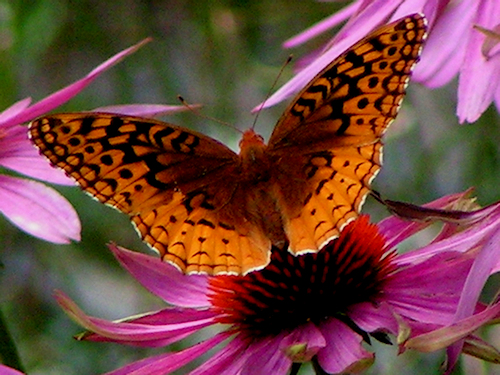
Fritillary butterfly
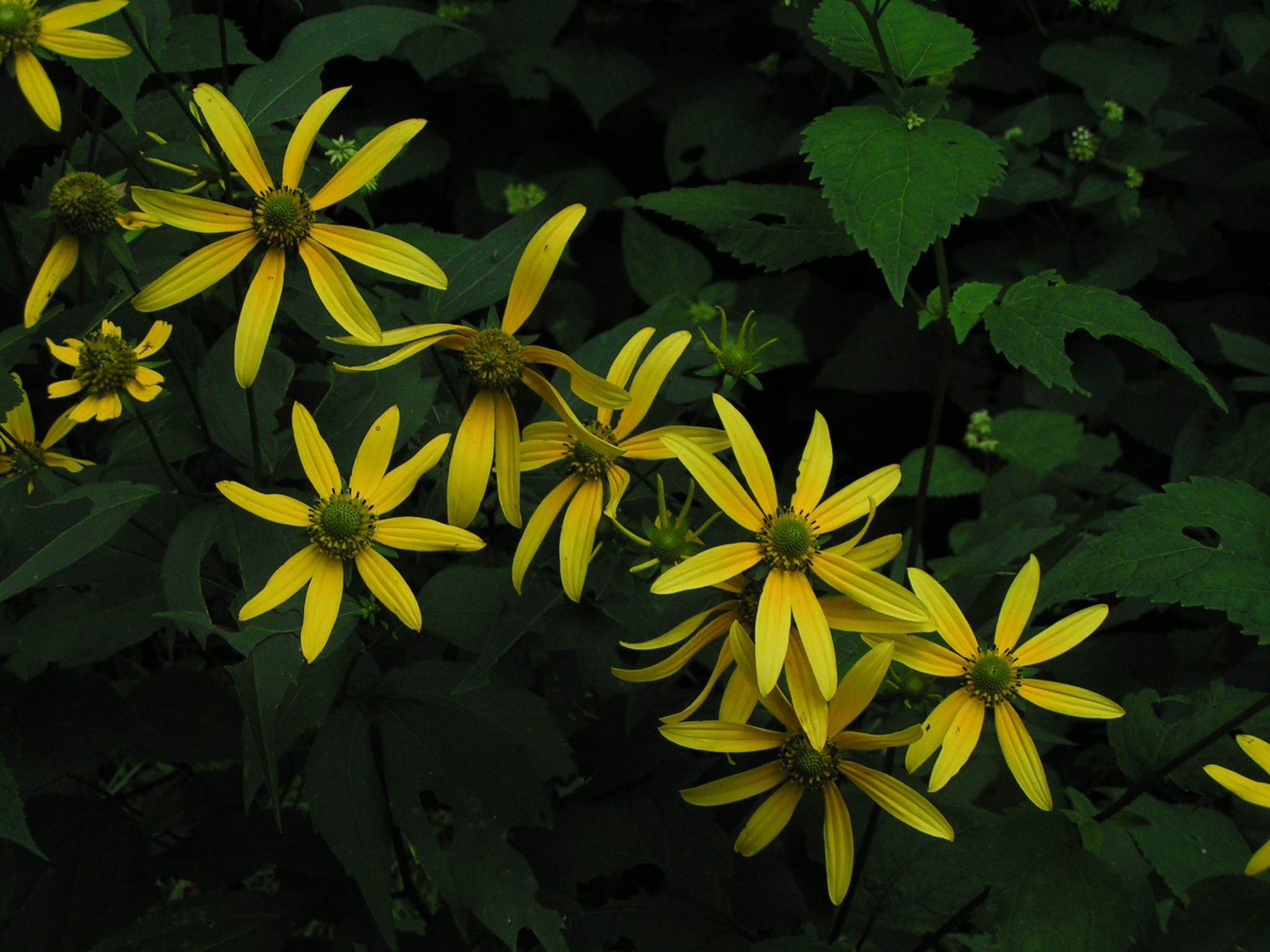
Tall coneflowers
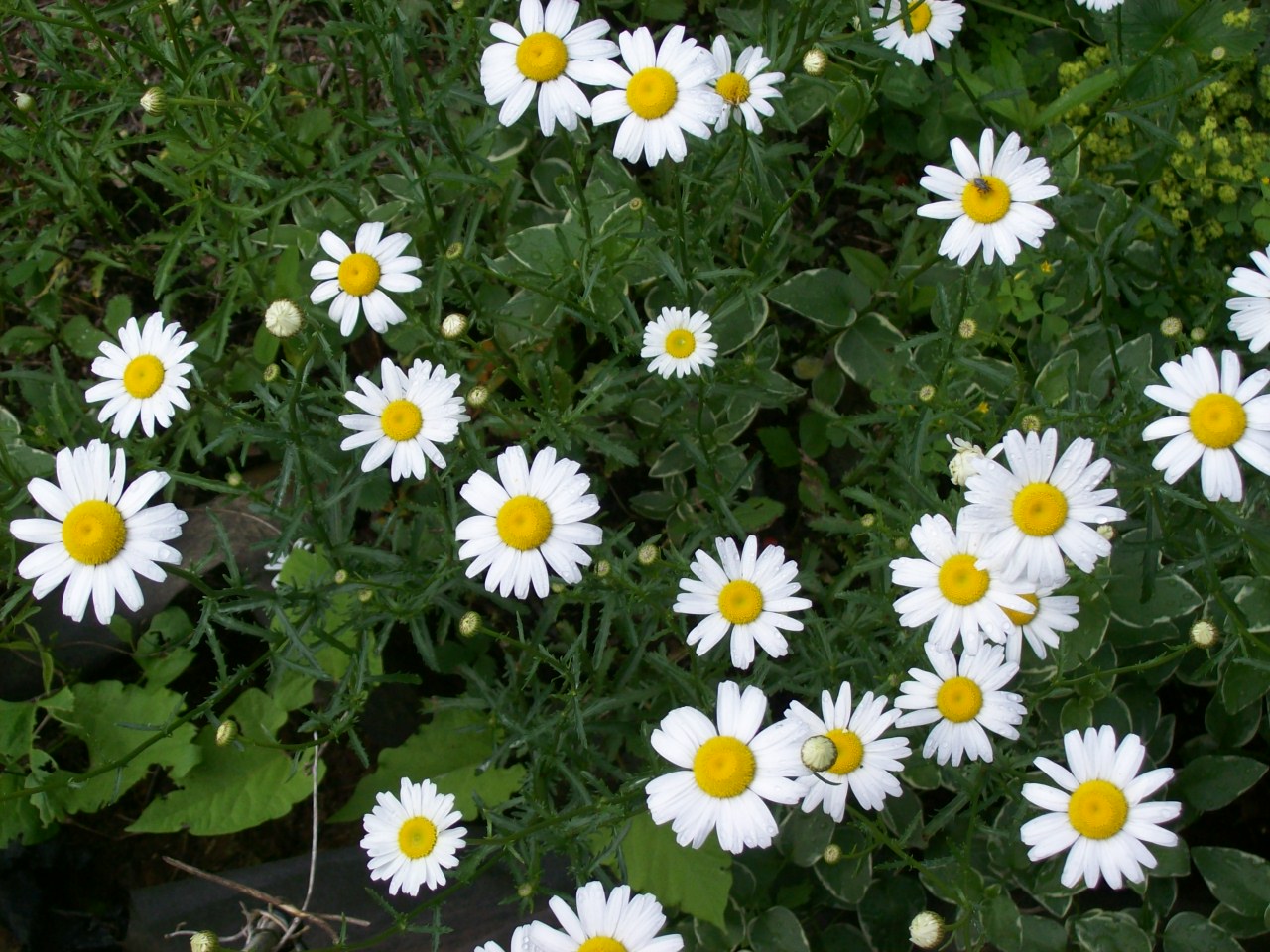
An abundance of daisies
